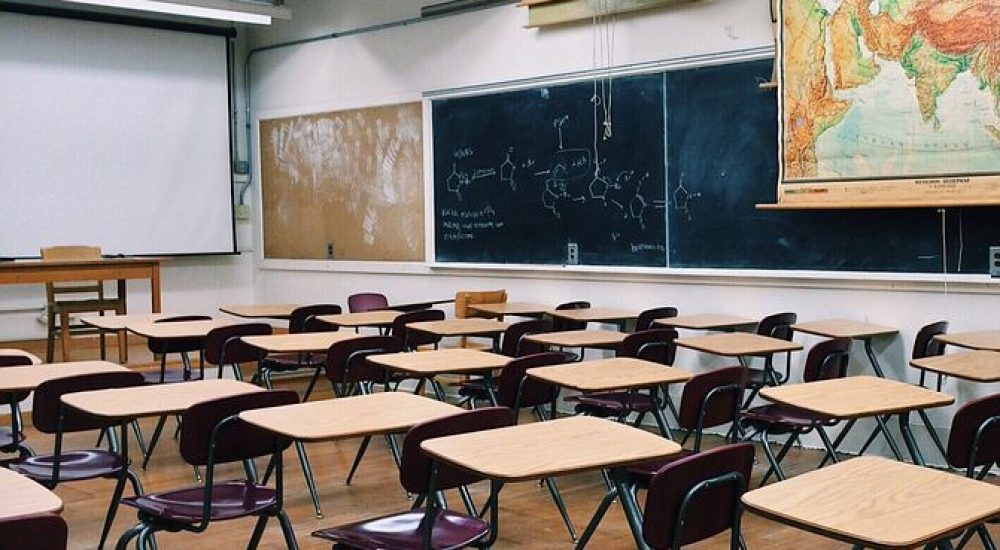We often teach our young people to listen to their elders because they are the voices of experience and wisdom.
But many times, the best way to get through to a young person is through another young person.
With this in mind, it is especially encouraging to be able to recognize two Baltimore-based youth organizations – Wide Angle Youth Media and the Baltimore Urban Debate League – that are engaging young people in citywide efforts to spread the message about the value of attending school regularly and develop strategies aimed at making it easier for students to get to school.
We are impressed by the work of these young people to tackle attendance barriers, such as inadequate public transportation, with the goal of improving academic achievement for their peers across the city.
For example, Wide Angle Youth Media’s Attendance and Design Team enrolls a group of high school students to produce media campaigns aimed at boosting school attendance in collaboration with several key local partners, including the Baltimore Public School System’s offices of Attendance and Truancy as well as Early Learning, AARP’s Experience Corps, Open Society Institute-Baltimore and Baltimore City teachers.
Wide Angle’s Attendance and Design Team, which launched during the 2011-12 school year, used media advocacy tools to tackle attendance barriers, such as inadequate public transportation, school uniform policies and chronic absenteeism in early grades.
An early project included a print campaign, including student-designed posters and messaging, to encourage youth to participate in the Maryland Transit Administration’s Rate Your Ride campaign. Wide Angle’s team promoted the Rate Your Ride program – which is an initiative that solicits real-time feedback from riders via text messaging and online surveys – as a vehicle for youth to have a voice in improving public transportation that would lead to more reliable and comfortable accommodations. Between 15,000 and 18,000 Baltimore students rely upon public transportation each day to get to school, according to school officials. Students often cite late buses and other issues among the reasons they don’t make it to school on time or, sometimes, at all.
For one of the team’s more recent projects, which began last school year, students researched and developed materials aimed at improving attendance in the early grades.
Armed with statistics from the Baltimore Education Research Consortium showing that pre-K and kindergarten students have among the highest rates of chronic absenteeism (defined in Baltimore as missing 20 or more days in a school year), the Attendance and Design Team created take-home folders for teachers to use with the parents of their youngest children. The team also created materials to be inserted in the folders, including monthly attendance scorecards, at-home activities aligned with monthly learning objectives (developed in consultation with BCPS teachers), attendance tips, an “Every Day Counts” parent checklist and illness tip sheet. This fall, the folders were given to teachers at 50 city schools and the school system’s Early Learning department will evaluate the effectiveness of the initiative to determine whether to expand the effort next year.
Another student-led initiative, the Baltimore Urban Debate League’s A-GAME (which stands for Attendance and Grades Amplify My Excellence) enlists high school students as ambassadors to serve as youth advocates and school representatives in a citywide campaign designed to create a “community of self-advocacy” that enables students to speak up about attendance barriers and engage city and education leaders around solutions to address those obstacles.
Specifically, A-GAME ambassadors promote good attendance by:
- Convening focus groups to help identify attendance barriers and producing programming (such as poster campaigns, field trips, school assemblies, increased access to resources) to help alleviate those issues.
- Developing messages aimed at supporting ninth-graders’ transition to high school.
- Participating in citywide conversations to represent students’ voices on issues related to school attendance, and
- Planning quarterly trainings at their schools to inform their peers about attendance barriers.
- With both of these afterschool programs, students have been key partners in the advocacy effort to boost attendance and improve educational outcomes for all youth. We applaud these youth-led campaigns and their early positive results in engaging young people around the critically important issue of regular school attendance.
Research shows us that students who are involved in engaging, meaningful afterschool programs tend to have higher attendance rates and better grades overall than those who don’t participate in such activities. Given that fact, we see these student-led attendance campaigns as win-win propositions – students engaged in the programs are likely to be in school, and we are optimistic that their afterschool efforts are inspiring others to show up more often for school as well.
To learn more about these programs, visit their websites at:
Hedy’s breakfast –
“I had an English muffin and a latte, generously made by my very supportive husband, Jack, who makes me one every day that I’m not on the road J.”
Ellie’s breakfast –
“I had a bowl of Cinnamon Life Cereal (can you tell I’m a mom?) and a banana and, of course, black Coffee!”
Authors: Hedy Chang and Ellie Mitchel
Hedy Chang is director of Attendance Works, a national and state initiative that promotes better policy and practice around school attendance.
Ellie Mitchel is director of the Maryland Out of School Time Network, a statewide collaborative of community members and groups campaigning for expanded funding, more effective policies, and high-quality out-of-school time programming.
